Last updated - December 19, 2022
There is no doubt that the future of all businesses is online, and currently, all businesses that are online are booming. There’s never been a better time to venture into an online business than now, especially with global eCommerce sales hitting $4.28 trillion. However, it would help to learn and understand the eCommerce platform that can work best for your business before deciding on purchasing one.
Trying to figure out the best platform for your business can be a daunting task. Hence, we made it easy for you. In this article, we have compared the five best eCommerce platforms that are available in the market today, based on which you can decide what works best for you and your business. Though all the below-listed platforms are top-notch, there are some distinct features of each of them, which differentiate them from one another.
Overview
- What is Shopify?
- What is WooCommerce ?
- What is Volusion?
- What is Wix?
- What is Squarespace?
- What is BigCommerce?
- Detailed comparison
- Pricing
- Ease of Use
- Themes
- Payment Gateways
- Shipping & Dropshipping
- Security
What is Shopify?
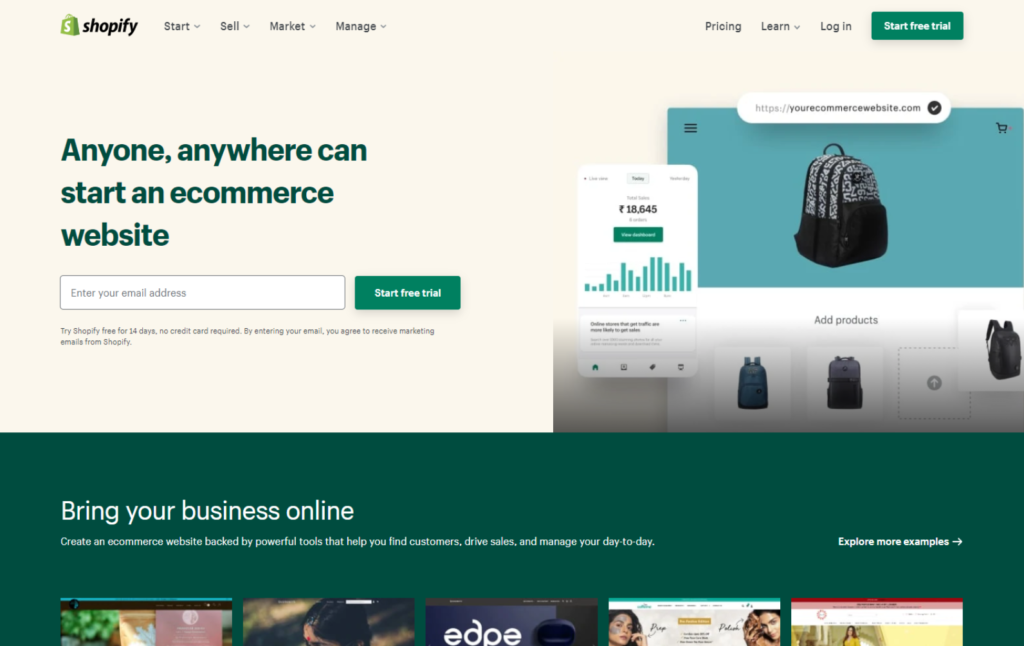

Shopify was founded in 2006 by Tobias Lütke and Scott Lake as a complete eCommerce solution. The platform was created with the sole intention of overcoming the lack of a good eCommerce system in the market for their online snowboarding equipment business. That’s how Shopify came into being.
Shopify is a one-stop-shop that comes with everything you need to start selling online and taking payments right away. As it is a hosted service, you won’t have to worry about the technical aspects of running your internet store, thus negating the need for a separate hosting package.
The focus of Shopify is to offer its customers a platform that is simple and easy to use. If you are just starting out your business, Shopify is the go-to platform, as it gets your business started in a jiffy, given its comprehensive features.
What is WooCommerce?
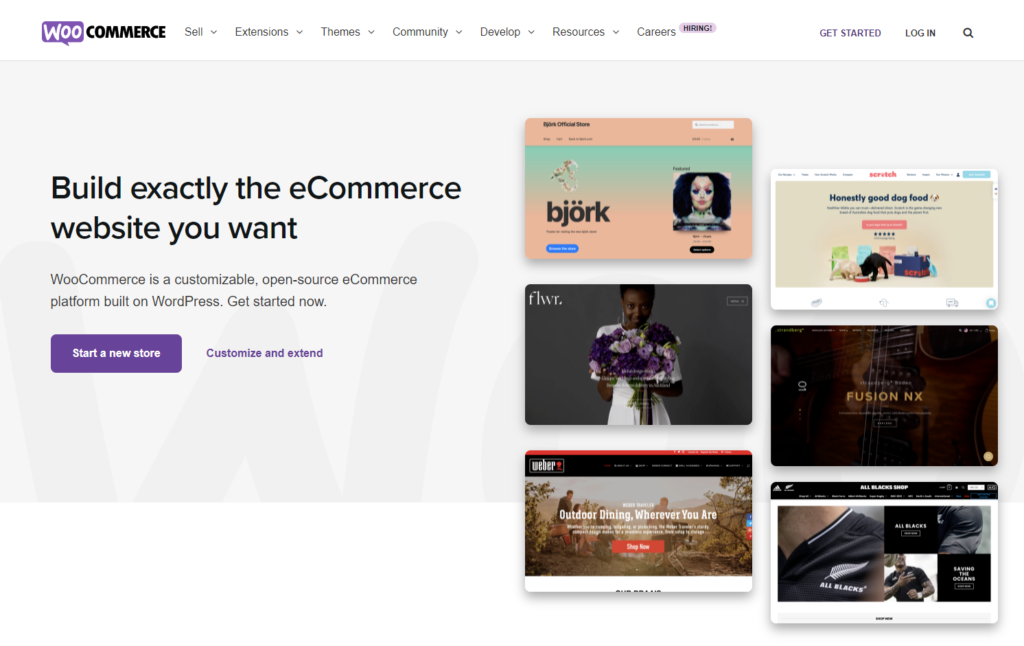

Woo Themes, a WordPress theme developer, designed WooCommerce, which was later bought over by Automattic in 2015. WooCommerce is an open-source plugin that needs to be installed alongside WordPress Content Management System (CMS). It can be installed and activated like any other WordPress plugin. In case, you are just starting out and do not have a website, then you will have to first build it with the help of WordPress as your CMS and then install the plugin. Otherwise, we strongly recommend migrating your store from Shopify to WooCommerce if you already have one.
What is Volusion?


Volusion, on the other hand, is one of the oldest eCommerce platforms in the market that has been providing eCommerce solutions since 1999. It was developed with the intention of making it easy for amateurs to be able to develop websites without having to write code. BigCommerce and Shopify, however, quickly surpassed it.
Over recent years, though, Volusion made a lot of changes and improvements to its features, along with providing unlimited bandwidth. It is gradually making its presence known and gaining traction in the market. Today, it is considered a bankable eCommerce platform that can be looked at as a cheaper alternative to Shopify, especially with regard to subscription costs. Along with dropshipping, Volusion has many other ideal and user-friendly features, making it one of the ideal choices for a new website builder or anyone else.
What is Wix?


Wix is a drag-and-drop website builder that officially introduced a new version named Wix eCommerce in 2020, despite its success as one of the greatest online shop builders. Wix has over 523,000 active websites.
Wix eCommerce adds a range of new and intriguing features that range from improved consumer shopping and payment experiences to company and financial management capabilities, among others. This new edition is aimed at small and large online retailers, brands, and merchants all around the world.
What is Squarespace?


Squarespace is a hosted Content Management System (CMS) for building and managing websites, blogs, portfolios, and online storefronts. It allows businesses of all sizes to create professional websites using a drag-and-drop interface. Squarespace currently has 2,608,015 active websites all around the globe.
The key difference between Squarespace and Shopify is that while Squarespace was developed to assist content-based websites, Shopify was created primarily to boost sales for online businesses. Thus, you can find a number of differences between these two popular platforms.
What is BigCommerce?


BigCommerce has grown to become one of the fastest-growing eCommerce software firms. Their clientele varies from small businesses starting up new online storefronts to well-known brands like Toyota, Bliss, DressUp, etc.
Detailed Comparison
Pricing
Shopify Pricing


Shopify has a very clear pricing structure, which allows you to decide beforehand the package that would work best for you and your business.
Shopify offers three main plans:
- Basic Shopify ($29)
- Shopify ($79)
- Advanced Shopify ($299).
An additional 2.9 percent + 30 percent for each transaction will have to be paid, depending on your membership. However, the fees can be minimized to 2.4 percent + 30 percent by selecting the Advanced Shopify plan.
Another key point to consider is that your online store cost can increase if you use any of Shopify’s premium themes or programs. It also charges extra if you use an external payment gateway. However, these costs can be reduced by selecting the Shopify Advanced plan.
WooCommerce Pricing
Though the WordPress core program and the WooCommerce plugin are both available as free downloads, some premium WooCommerce themes and official WooCommerce extensions are paid options. However, the prices can be kept low by selecting free WooCommerce themes and plugins from the WordPress repository. Another factor to be considered is that hosting and domain names have to be purchased in case you do not have a WordPress site.
Considering all the above factors, the final cost of a WooCommerce store can be high as compared to the fixed Shopify subscription. However, WooCommerce comes with the flexibility of working out a cost that suits you best based on the free and paid add-ons you select from the repository.
To get a deeper grasp of WooCommerce pricing, check out WooCommerce Pricing: How Much WooCommerce Costs to Run Your Online Store – Ultimate Guide.
Volusion Pricing
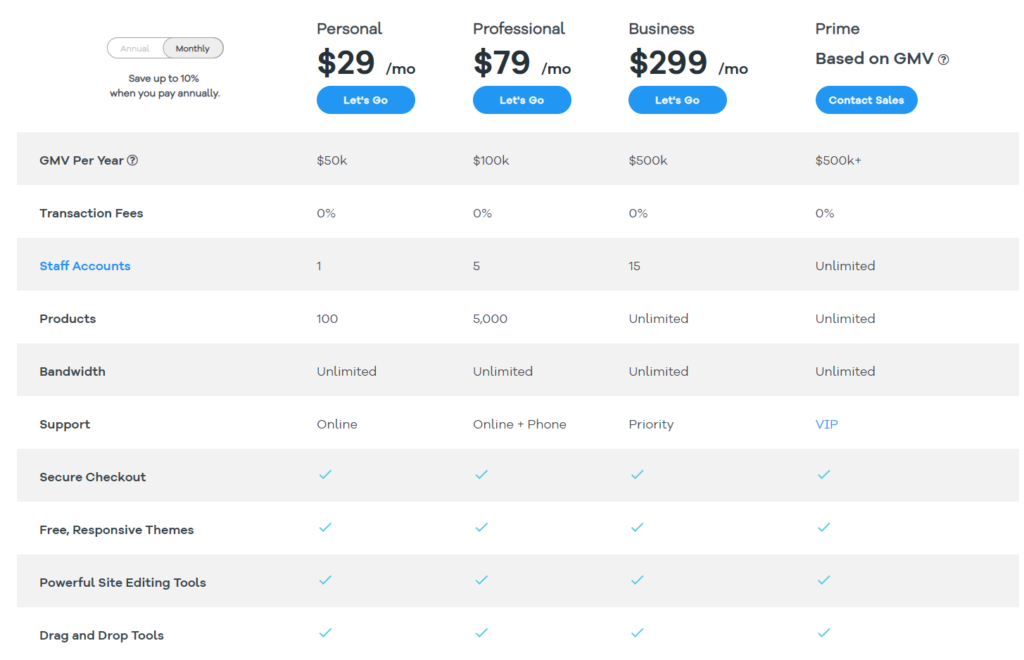

Volusion provides four payment plans that start from $14 to $135 (premium plan). Similar to Shopify, Volusion too offers a 14-day free trial. Based on the plan you choose, Volusion can be a cost-effective alternative, wherein you won’t have to worry about transaction costs.
Wix Pricing


Wix eCommerce offers three price options that range from $17 to $35.
- Business Basic – $17/month: This plan has a set of features that are ideal for e-merchants who are just starting their business. Some of its features are unlimited bandwidth with a free domain for a year, sales analytics and reports, and many more.
- Business Unlimited – $25/month: This package comes with all the basic features, along with more storage, Pro eCommerce features, and a professional logo. Moreover, you will have access to more offers, such as tax calculators, dropshipping, numerous currencies, etc.
- Business VIP – $35/month: This plan offers all the benefits of an unlimited subscription, plus priority assistance to store owners. Furthermore, all your queries on Wix’s response page and your phone calls will show up at the front of the queue.
Squarespace Pricing
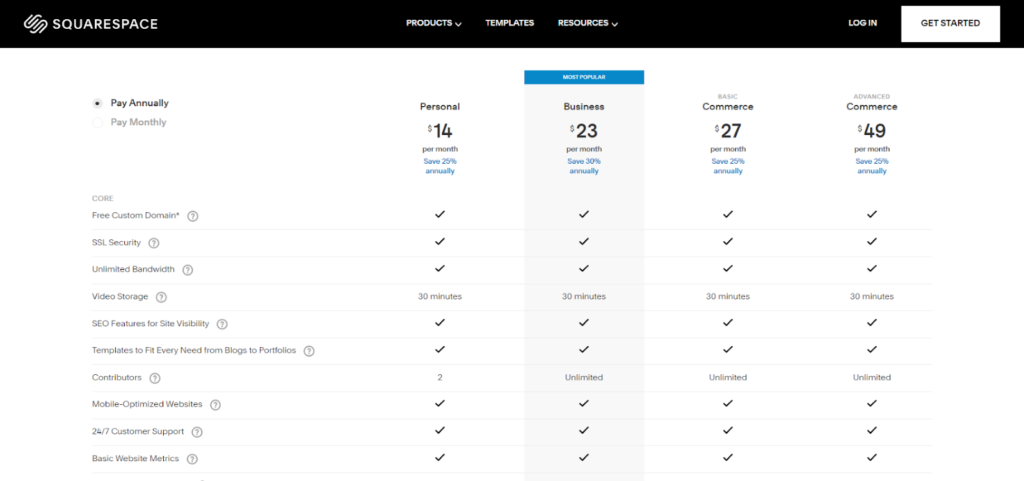

Squarespace offers four monthly price options, such as Personal, Business, Basic Commerce, and Advanced Commerce, which range from $16 to $54. The higher price option offers more features that can be useful for your business. Squarespace also offers a 14-day free trial, which gives you enough time to decide if this platform is ideal for your business.
If you are looking for a more cost-effective alternative, Squarespace is the one. Its $54 monthly plan gives you access to the most advanced features, unlike Shopify, you have to spend at least $299 to get access to all its applications and add-ons that are needed for expanding your business.
BigCommerce Pricing


BigCommerce offers four price plans that include:
- Standard: $29.95 a month
- Plus: $79.95 a month
- Pro: $299.95 a month
- Enterprise: Prices are influenced by the requirements.
The best part of BigCommerce is that its price is decided based on the amount of revenue you generate each year, wherein it will automatically increase your subscription package as your business expands.
BigCommerce’s Standard Plan has an advantage over Shopify as it does not charge you extra for any transaction and has unlimited staff accounts. On the other hand, Shopify charges an extra fee for transactions and only 15 staff accounts, even with its Advanced Plan.
Ease of Use
Shopify Ease of Use
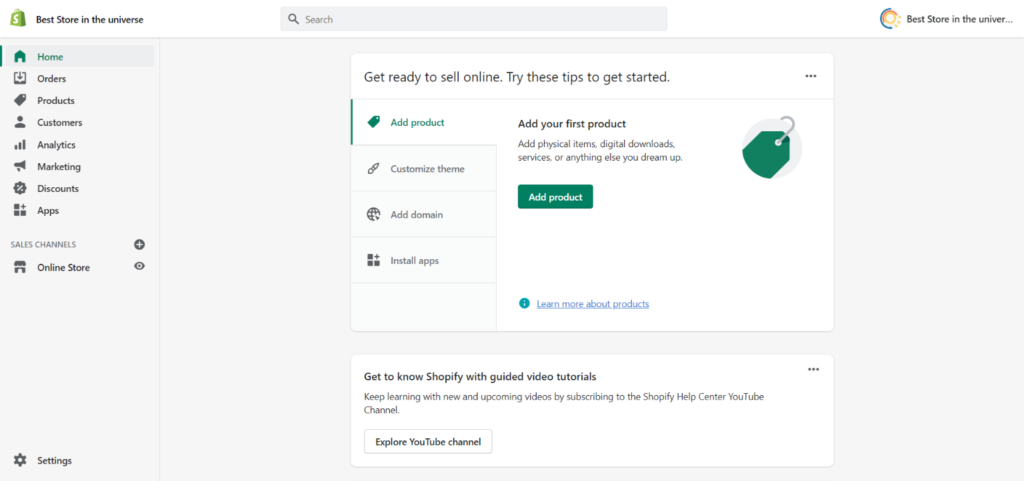

Shopify is considered the best for how simple it is to set up and comes with a fully functional store that is ready to receive orders. With Shopify, you don’t have to worry about a hosting package or buying a domain name as the platform takes care of all the technical aspects of setting up an online store, such as registering a domain name, hosting, and issuing an SSL certificate. Once your Shopify account is created, and you have decided on the theme, along with either buying a domain or syncing with your existing domain, you can straight away start accepting credit card payments.
WooCommerce Ease of Use


With WooCommerce, you will need to create a WordPress website first, along with setting up web hosting and registering a domain name before you can consider installing the plugin. In case, all the above are not in place, it would be quite a time-consuming process to get started with your online store. Furthermore, the cost of a hosting package and the domain name adds up to the overall cost.
However, the good news with regard to the WooCommerce plugin is that it comes with a helpful setup wizard that takes you through the majority of the initial setup. Adding a payment gateway, picking your currencies, and selecting your delivery methods are all covered in this procedure.
To have a better understanding of WooCommerce setup, check out How to Install WooCommerce on your WordPress Site.
Volusion Ease of Access
Volusion, on the other hand, is not as easy or simple to use as Shopify. Having to handle multiple functions simultaneously and having to juggle between two interfaces, i.e., storefront and backend, can be quite cumbersome, daunting, and chaotic, especially for an amateur.
Hence, it can be said that Volusion does not score much in the ‘ease of use’ department, as compared to Shopify or other platforms such as Squarespace.
Wix Ease of Use


With Wix, the content on the front-end interface of your store can be easily managed with the help of the platform’s drag-and-drop creator – all you have to do is click on the feature, such as a title, image, logo, etc., and drag it wherever you want it placed. This is such an easy feature that even amateurs with absolutely no idea of developing a website can use it with ease
Another plus point of Wix is that Wix offers certain AI technologies, such as Wix ADI and Wix Editor, which can help you in the initial creation of your online store. Building a website with Wix is pretty easy.
Squarespace Ease of Access
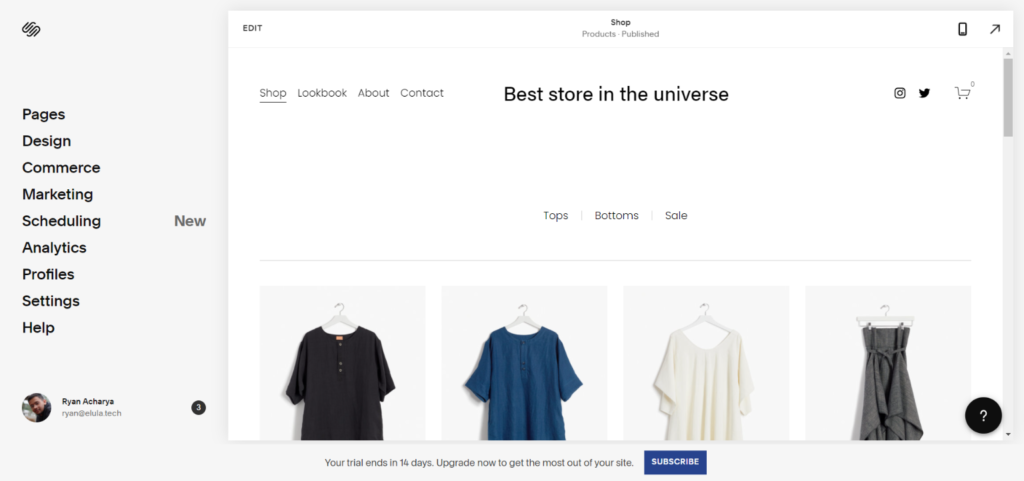

Squarespace is a hosted platform like Shopify; however, it is a little more difficult to master. It is ideal for newcomers, who can easily use the drag-and-drop sections with certain content blocks. On the other hand, the editor’s web page is a little difficult to browse and lacks visual signals.
Just like Shopify, Squarespace is also user-friendly and strikes a good balance between basic design elements and advanced business tools. However, Shopify scores a wee bit over Squarespace for its ease of use.
BigCommerce Ease of Use
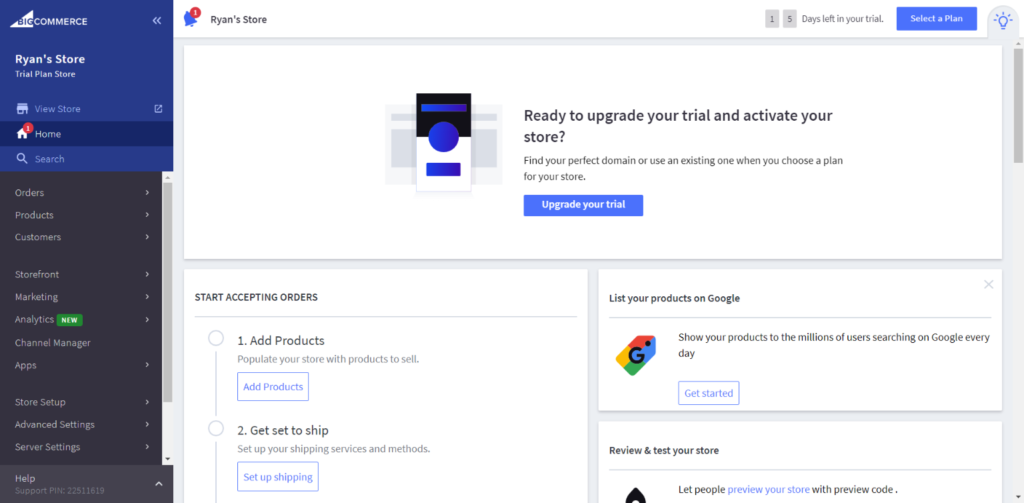

BigCommerce is not ideal for newcomers, owing to its technical jargon, which can leave those without this knowledge quite lost. For example, even a simple task of adding a product would require you to look up precise phrases to understand the terminology. Because of its rich built-in capabilities, BigCommerce enables a higher level of customization, however, it is not suggested for novices.
Themes
Shopify Themes
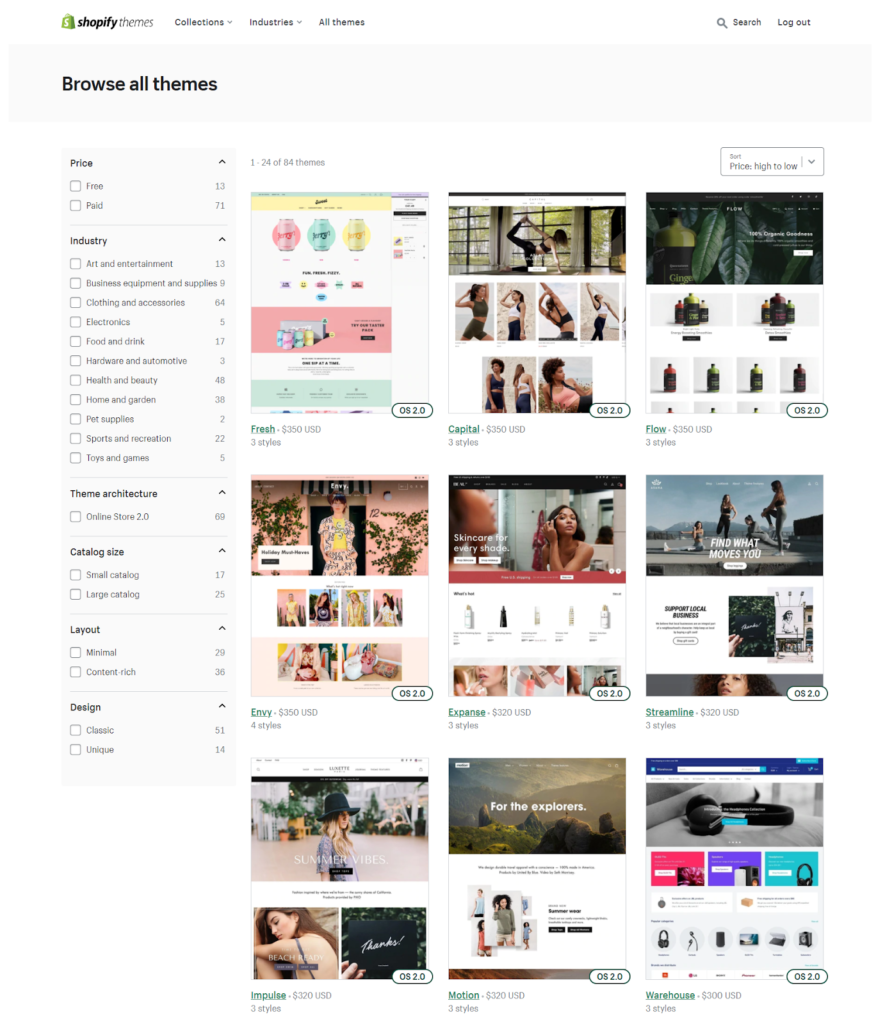

Shopify offers an array of themes to choose from, with at least 13 free templates and 71 premium designs that range from $150 to $350.
The large repository of Shopify themes includes sports, electronics, clothing, cosmetics, etc. Along with being beautiful and appealing, Shopify themes are also mobile-friendly and can be easily edited with the help of its mobile editor. The storefront themes can be easily changed to suit your requirements. The performance of these themes is guaranteed as they are developed by UI-UX experts. Check out the 30 Best Free Shopify Themes for your eCommerce Store article for a reference to good and usable Shopify themes.
Volusion Themes


Volusion has fewer templates to select from as compared to Shopify, with only 11 free and 34 premium themes, which are industry-specific with features that can help with the performance of your site.
Even though Volusion themes are mobile responsive, they are difficult to manage via a mobile phone. Moreover, Volusion templates cost more than Shopify’s templates.
Wix Themes & Templates


Wix offers an unbelievable range of over 800 free templates that can be easily customized to suit your requirements. Even though choosing from this vast range of templates can be confusing, if you know what you want for your store, then shortlisting suitable themes can be easy.
Wix templates are quite appealing and can do a lot to boost your sales. You can design your website with the help of Wix’s built-in tools (such as Wix Editor X, Wix ADI, and Editor). In addition, Wix Velo, Wix’s own coding language, can help take your store to the next level.
On the flip side, Wix templates are not changeable once selected. This can be a little frustrating if you want to expand your online store to include newer products and want to rebrand in the future.
Squarespace Themes


Squarespace is basically a blog-hosting service. Hence, most of its templates are designed to suit individuals who like to showcase their work, such as art, music, photography, etc. Squarespace templates are contemporary, sleek, and attractive, ideal for people who want to design their storefront in an aesthetic manner, despite not having all the features offered by Shopify. The best part about Squarespace templates is that they have been professionally designed to satisfy the highest standards of outstanding design, usability, performance, and mobile responsiveness.
While Shopify is ideal for those looking to develop an eCommerce store, Squarespace is the best for content-driven websites.
BigCommerce Themes & Templates
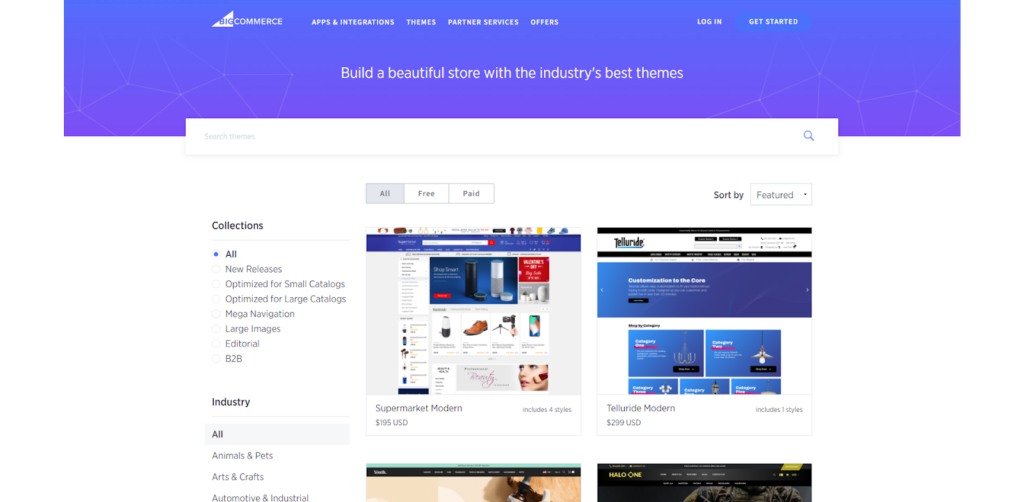

BigCommerce themes are organized by industry, layout, and pricing. Even though it offers templates under many categories (though not as many as that of Shopify), its free templates appear archaic and are not ideal for building a website for a long-term business. That being the case, any rebranding will require switching to a paid theme, which can be priced in the range of $150 to $300.
Payment Gateways
Payments on Shopify
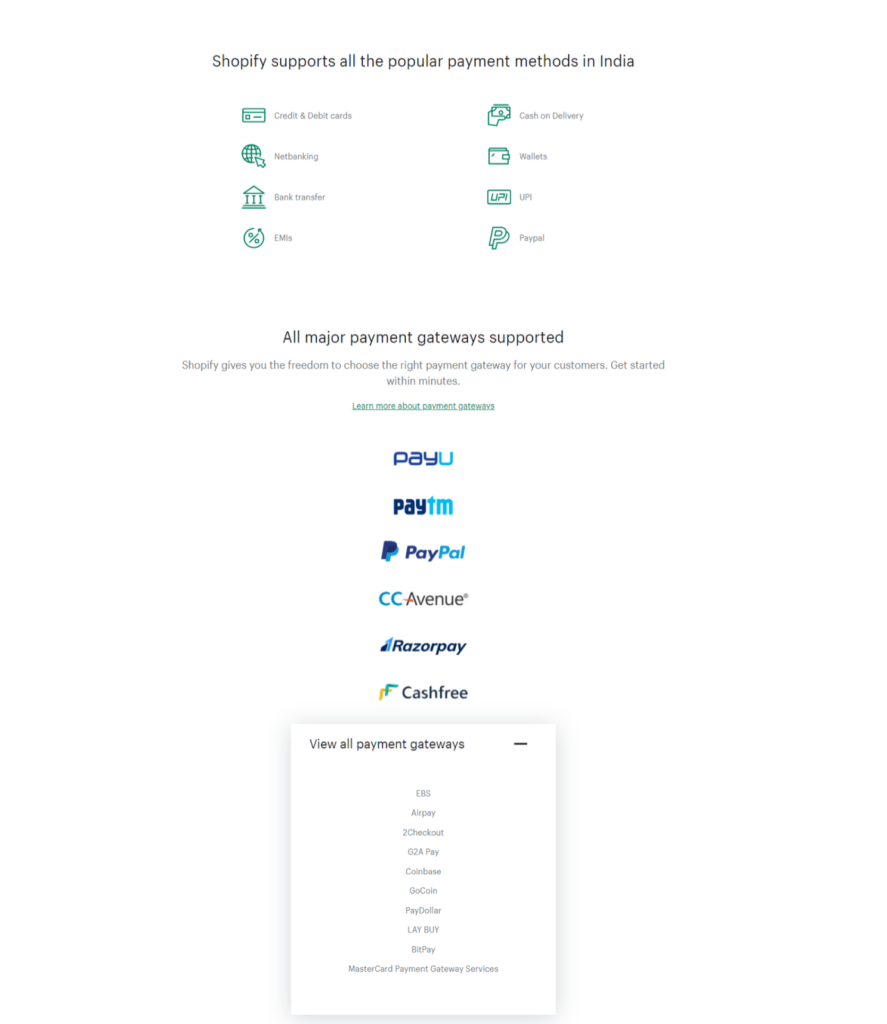

Shopify accepts all major payment methods, such as PayPal, Amazon Pay, Square, including Bitcoin, along with many more options. Business owners can be assured of higher conversion rates, as Shopify is making it easy for local suppliers by increasing its payment options.
Most payment methods charge 0.5 to 2 percent per transaction; however, Shopify users are not charged this additional fee if payments are made via Shopify’s payment gateway, resulting in huge savings for the business owner.
On the downside, though, the payment gateway is not available in all the 17 countries where Shopify is available, thus making it an expensive option. Because of this, people have to pay extra for apps other than the up/cross-selling apps. Though Shopify ends up costing more in comparison to other platforms, it makes up the number of features it offers on all its apps. Though you can use third-party payment processors with Shopify, it is not advisable as they incur additional costs.
Payments on WooCommerce
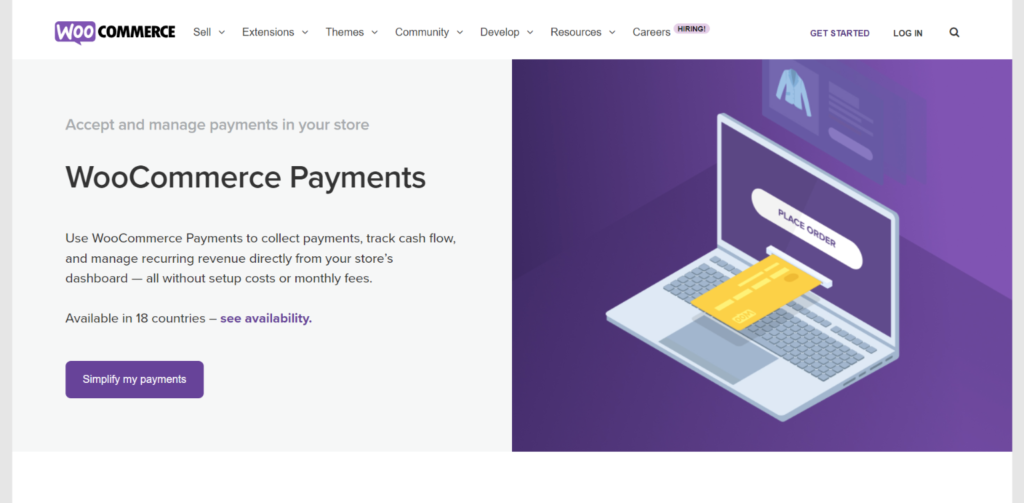

WooCommerce too offers many payment options, similar to Shopify. You can opt for either of the platforms unless you are particular about using a particular gateway.
All main payment gateways, such as Stripe, PayPal, Square, and Authorize.Net, among others, are supported by WooCommerce. In addition, WooCommerce also supports numerous regional entry points.
WooCommerce also has its own payment gateway, which has its own set of fees; however, using external gateways is free. This means that your bank or chosen gateway will only charge you transaction fees.
Payments on Volusion
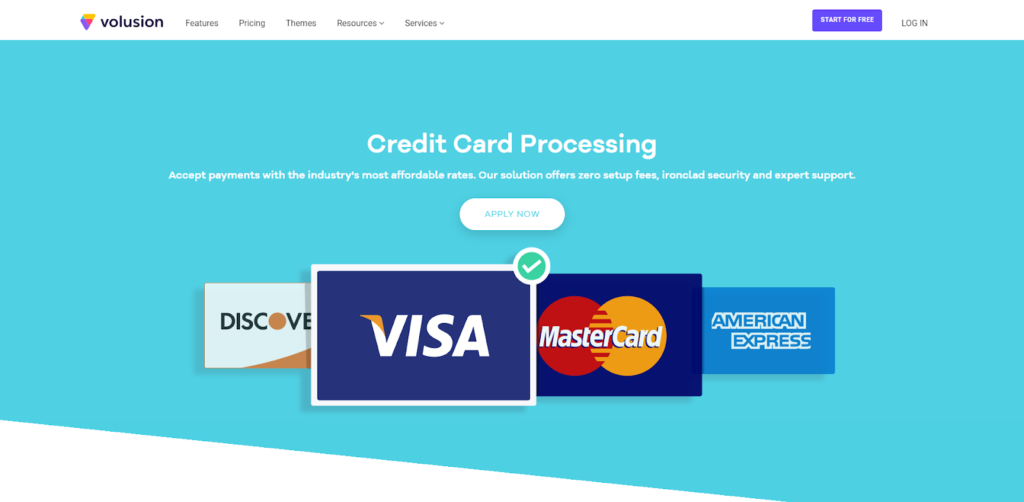

Volusion has its own native gateway, like Shopify, but with a credit card transaction fee that is lower than on other payment gateways. However, the number of products and the revenue generated on each plan are restricted on Volusion, unlike Shopify, where there is no restriction even on the basic plan.
Payments on Wix
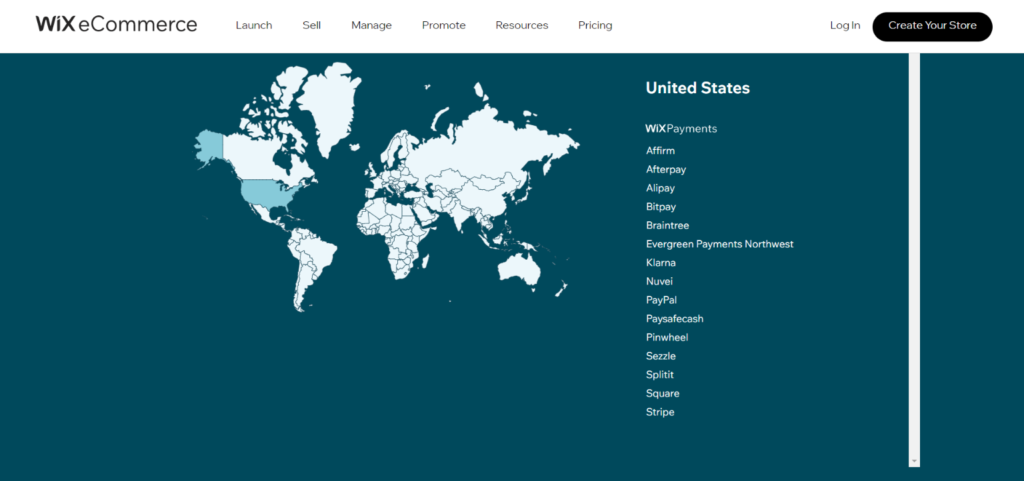

Wix follows strict standards and has advanced online encryption. It supports all the traditional payment methods, such as PayPal, Square, Stripe, etc. One of Wix’s biggest features is its “Buy now, pay later” option, which makes it simple for your clients and eliminates the need for additional integration fees.
Basically, payment methods are easy to set up with Wix, along with the following amazing features:
- Online payments are secure
- Debits, and credit card payments can be accepted, along with iDeal and “buy now pay later” options, such as Afterpay, Sezzle, and Affirm
- A unified dashboard for payouts, chargebacks, and refunds is available
- No requirement of a third-party payment gateway
- 24/7 customer support
Payments on Squarespace


Payment methods on Squarespace are limited to PayPal, Square, Apple Pay, Afterpay, and Stripe.
Payments on BigCommerce
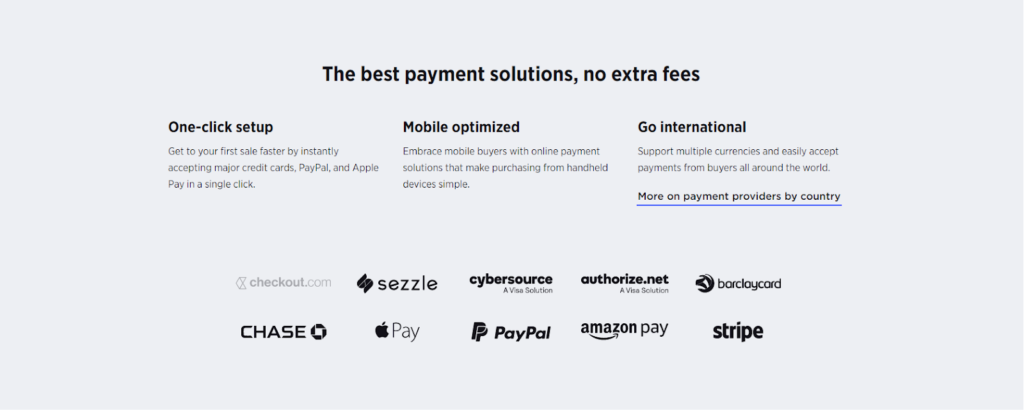

BigCommerce does not come with a built-in payment processor. Hence, store owners have to link their store with a third-party payment gateway. It comes with 65 pre-integrated payment gateways, such as PayPal, Amazon Pay, Stripe, Square, etc. Some benefits offered on BigCommerce are PCI compliance, mobile optimization, and no transaction fee.
Shipping & Dropshipping
Shipping & Dropshipping with Shopify


Any business looks for a smooth and hassle-free shipping option, irrespective of the eCommerce platform it chooses. With Shopify, you can ship globally. Furthermore, it has built-in connections with Canada Post, UPS, FedEx, DHL, and USPS, giving it an advantage.
Shopify enables dropshipping, which includes buying products from merchants and shipping them straight to the customer. Shopify comes with some extra features to ensure the success of dropshipping for your business.
Shipping & Dropshipping with WooCommerce
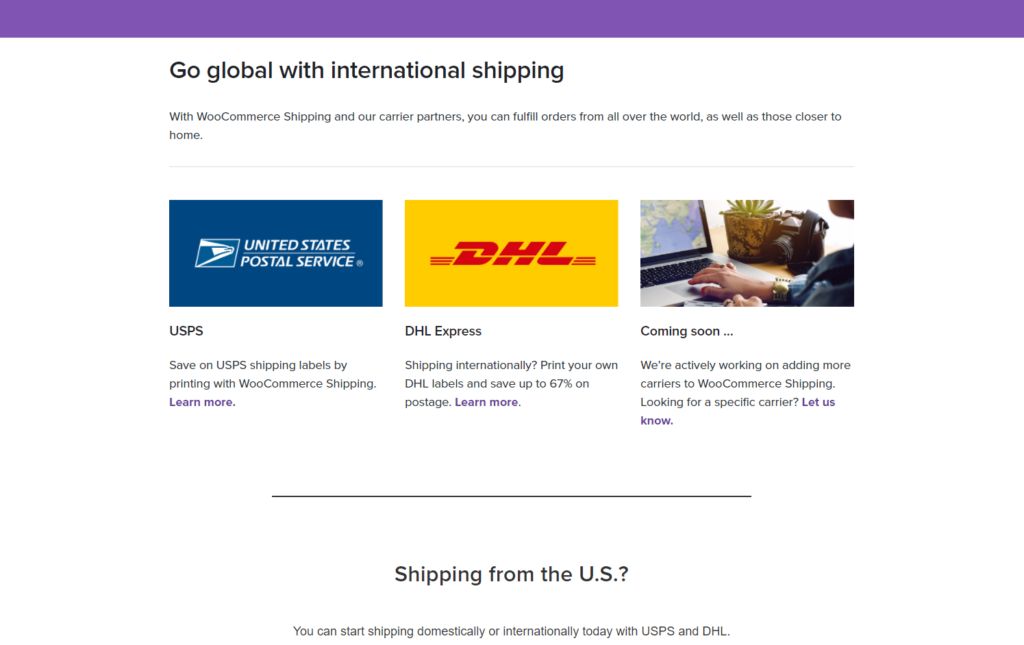

WooCommerce also offers all the shipping and dropshipping options that Shopify offers. In fact, the WooCommerce community has developed many plugins that let you directly import items from third-party marketplaces. One such plugin is the AliDropship plugin, which interfaces with AliExpress. It can automate order fulfillment with a single click
Just like Shopify, WooCommerce is also an ideal choice for dropshipping. However, the point to be kept in mind is that most of the product marketplaces charge a membership fee and shipping fee, along with other costs, which can eat into your already low dropshipping profits.
Shipping & Dropshipping with Volusion
Shipping types can be chosen with Volusion, along with offering special discounts, and flat shipping alternatives. You can also determine overall shipping costs with the help of third-party shipping applications, such as ShippingEasy.
Unlike Shopify, Volusion uses third-party applications and ties up with other programs to ensure shipping, which does not work in its favor.
Shopify wins by a long-range in this department, as it offers integrated shipping and discounted rates with its premium subscription.
Volusion too offers integrated dropshipping to its customers by connecting to shipping services, such as UPS, DHL, USPS, etc. The key difference is that while all these service providers are integrated within Shopify’s dashboard, Volusion connects to these service providers through apps.
Shipping & Dropshipping with Wix
Shipping with Wix can be difficult, even though it provides a detailed guide to help set up shipping, delivery, and pickup, as shipping apps are needed to enable global payments. Moreover, Wix does not offer printable shipping labels, which are necessary to track orders and set tax rules for every product.
Dropshipping is only available on Wix’s Business Unlimited and Business VIP subscriptions, where third-party apps can be used to dropship. Furthermore, with the Business Unlimited plan, only up to 250 products can be sold. However, with Business VIP, there is no limit on the number of products sold.
Shipping & Dropshipping with Squarespace
If you are on its Commerce Advanced Plan, Squarespace allows you to use carrier-computed shipping. It enables automatic calculation of shipping prices based on FedEx, UPS, and USPS rates. Extensions, such as EasyShip, can be used to automate this process.
Shipping & Dropshipping with BigCommerce
You can find a few good dropshipping apps on BigCommerce. However, its other applications tend to vary a lot in their performance and are not that well known, except for Oberlo, which is considered quite good.
Security
Most online businesses tend to attract hackers, more so if the business is successful. If you are running an online business, your customers are sure to provide you with their credit and debit card information when they make purchases. Such vital information tends to attract hackers. Hence, securing your website is crucial.
Security with Shopify
Shopify is a hosted platform and the responsibility to safeguard your business from hackers is its prime responsibility. For this very reason, the platform includes certain important security elements, such as an SSL certificate.
Nowadays, most browsers display a padlock icon to let you know that the website is protected using SSL. This certificate guarantees and ensures visitors that the website they are on is safe to visit and shop on. This safety aspect would definitely work in your favor, as customers would feel assured and shop without worry, thus securing more sales for your business.
Even with Shopify’s basic level of security, your data will be well guarded against data leakage or loss. Along with SSL certificates that can provide message encryption, it is also PCI compliant. This ensures your payment gateways are secure.
Security with WooCommerce
Unlike Shopify, WooCommerce does not provide in-built security. However, considering that all online stores need to keep their business safe from hackers, WooCommerce has come up with a solution for this problem by using some very good apps, such as Jetpack and Sucuri Security Suite. Though WooCommerce does not provide SSL, it provides PCI compliance for all WooCommerce Payments. Although, you can get a free, automatic, and open-source SSL certificate from Let’s Encrypt, which is a certificate authority that may provide you with an SSL certificate for your website. For further information on how to get the SSL certificate and more, check out Why SSL Certificate is Worth for a WordPress WooCommerce eCommerce Store.
Security with Volusion
Volusion’s security features are similar to Shopify, thus providing good security against online hackers, fraud, etc., to its customers.
Security with Wix
Wix provides online security similar to Shopify. All Wix websites are integrated with a high level of security. A platform that comes with SSL security gives the assurance to merchants that their data and other crucial information on their website would be safe from hackers.
Wix has specialists who undergo comprehensive hacker testing. They ensure that your website is always up and running with DDoS Protection – a dependable web hosting service.
Security with Squarespace
Just like Shopify, Squarespace too provides a satisfactory basic level of security, which is sufficient to safeguard your online company data from data leakage or loss. Squarespace also offers SSL certificates that provide message encryption. Moreover, it is also PCI compliant, just like Shopify, thus meeting the security standard for payment gateways.
Security with BigCommerce
BigCommerce provides impressive security at numerous levels for all the sites it hosts as a SaaS. Moreover, all servers are PCI DSS level 1 certified, which prevents credit card data breaches. In addition, it provides some more security features, such as perimeter and server-specific firewalls, file integrity scanners, intrusion detection software, 24/7 human monitoring, and fraud transaction protection.
Listed below are the Pros and Cons of each of the eCommerce platforms we have talked about in the article so far –
| Platform | Pros | Cons |
| Shopify | 1. Very fast load time. 2. 1-Click selling. 3. Support of certified partners. 4. Options available for up/cross-selling. 5. Simple to use. 6. Highest caliber E-commerce features. 7. Multi-channel selling. 8. App shop offers a huge selection. 9. Excellent Customer service. | 1. Applicable Transaction fees. 2. Paid Apps tend to make it costly eventually. 3. SEO is not that strong. 4. Additional transaction costs for third-party payment gateways. 5. High monthly charges owing to numerous services and applications |
| WooCommerce | 1. Offers top-level apps (external sources), such as Jetpack and Security Suite. 2. Provides PCI compliance for all its Payments. | 1. Does not provide in-built security Does not provide SSL certificates. |
| Volusion | 1. Impressive on-boarding. 2. Very good help center. 3. No applicable transaction fees. 4. SMB-friendly built-in Subscription/Recurring payments. 5. Offers ‘Deal of the day. | 1. Automatic digital downloads cannot be sold. 2. Does not have up/cross-selling features. 3. Slow SaaS platforms. 4. Does not have a built-in blog feature. |
| Wix | 1. High level of security integrated into every Wix website. 2. SSL online security keeps connections safe and private through an HTTPS connection. 3. Well-trained Wix specialists with comprehensive hacker testing ability. 4. Website is always up and running with DDoS Protection – a dependable web hosting service. 5. Offers security on the same level as Shopify. | |
| Squarespace | 1. Clean and modern templates. 2. Reasonable costs. 3. Excellent customer support. | 1. Does not have an app store. 2. It has only extensions, the majority of which are third-party. 3. Limited payment choices. 4. Difficult to follow for beginners. 5. Does not have multichannel selling. |
| BigCommerce | 1. A long list of impressive built-in functions, making it a more enticing option. 2. Pricing that is designed around the revenue generated. 3. Provides marketing tools and features to help grow your business. 4. Provides capabilities required for your store’s security and validation in order to accept secure online payments. 5. Provides more features than Shopify. Hence, consumers are not required to integrate a lot of apps. 6. All servers are PCI DSS level 1 certified. 7. This ensures there are no credit card data breaches. 8. Perimeter and server-specific firewalls, file integrity scanners, intrusion detection software, human monitoring 24 hours a day, seven days a week, and fraud transaction protection are among the additional security features. | 1. The built-in features of BigCommerce are a little complicated for novices. Hence, it is a considerably difficult platform to utilize. 2. Fewer theme options. 3. Its free themes are archaic/not so in trend. |
Conclusion
It all comes down to your personal choices and expertise….
Shopify is a lot easier to operate. Nothing has to be installed, and you may get started right away. Payments are quicker to set up, and their pricing methods are simple.
WooCommerce is a free and open-source e-commerce platform that gives you total control over your online store. It is far less expensive to start an online store with WooCommerce, especially with these WooCommerce hosting companies.
If you want total control over your online business and want a cost-effective solution, WooCommerce is the platform for you.











